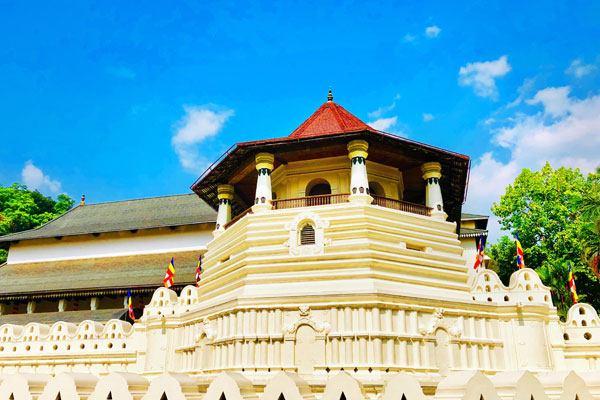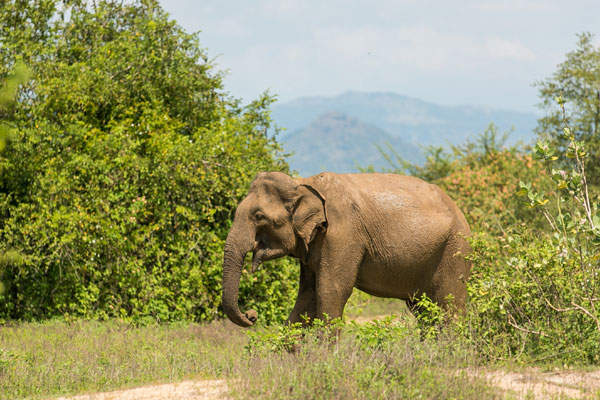An active one-week tour exploring Sri Lanka’s famed cultural triangle and more. Discover ancient civilizations, Colonial era Ceylon, and modern day Sri Lanka.
Highlights
- 6 unique UNESCO World Heritage Sites
- City walks
- Safari in search of Elephants
You will be accompanied by a certified and experienced Wayfarer’s tour guide.
All our itineraries are flexible and can be customized.
Day 1: COLOMBO- Arrive in Sri Lanka and discover the lesser-known parts of the capital city.
Welcome on arrival at the airport, by a Wayfarers Team Member and transfer to Colombo.
Take an evening walking tour around the hidden sites of Colombo, that gives a greater understanding into the history and multicultural nature of this city. Places of religious worship, street and wet markets and a few of Colombo’s ‘hidden gems’ are included in your walk.

Day 2: DAMBULLA & MINNERIYA- Discover an ancient Cave Temple complex followed by a safari in search of wild elephants.
After breakfast, travel to the city of Dambulla, in the heart of Sri Lanka’s cultural triangle. Visit the first of many UNESCO World Heritage sites on this tour, the Cave Temples of Dambulla, where a series of 5 caves a top a rock was turned into a temple complex almost 2000 years ago by the monarch of that time. The caves showcase a variety of well preserved, Buddhist paintings, inscriptions, statues and other items from medieval times.
Set off on an afternoon safari at the nearby Minneriya National Park. The National Park surrounds the ancient Minneriya Tank, that is one of a series of water sources supplying the surrounding farmlands and the native wildlife. Minneriya is best known for its healthy population of wild elephants who form larger “super herds” creating the Great Elephant Gathering, when congregating around the tank during the dry season (May-October) for a fresh food, a drink of water and a bath.

Day 3: ANURADHAPURA: Explore ancient Sri Lanka’s first Kingdom and birthplace of Sri Lankan Buddhism.
After breakfast take a drive through rural villages and forests to Anuradhapura, Sri Lanka’s first capitol from 5th Century B.C. to 10th Century A.D. The city has since been declared a Buddhist Holy City and is also referred to as the ‘cradle of Buddhism’ as this is where the religion was first introduced to the then King by the disciples of the Buddha that arrived from India. Buddhism is the official religion of Sri Lanka. Attractions include the oldest documented tree in the world, the Sri Maha Bodhi that grew from a sapling of the sacred Bo Tree under which lord Buddha himself gained enlightenment, the old city, the Brazen Palace built in 2nd Century B.C. and several majestic temples and pagodas, one of which is believed to enshrine the collarbone of Buddha. Anuradhapura yet another UNESCO World heritage site in Sri Lanka.

Day 4: SIGIRIYA & POLONNARUWA- Climb an iconic rock citadel in the morning and explore the ruins of ancient Sri Lanka’s second capital, in the afternoon.
Set out with a packed breakfast to climb the Rock Fortress, Sigiriya. The most iconic of Sri Lanka’s UNESCO world heritage sites, the Sigiriya rock fortress, sits a top a monolith rising 200m high from the scrub jungles of an otherwise flat terrain. The rock fortress still stands as a testament to the master engineers of ancient times, boasting its detailed architecture, fortifications and look outs, cut out on the rock face and a network of ponds and streams a top the rock. A series of steps and steel stairways ascend to the top of the rock. The famous-colored paintings of the Sigiriya Damsels can be found along the way, as well as an enormous set of lion paws carved out of the rock, the remains of an ancient gateway. Enjoy amazing views a top the rock along with the archeological ruins of the citadel.
The afternoon is yours to decide. Relax in the comfort of your hotel or visit the old city of Polonnaruwa, another magnificent UNESCO World Heritage site. Explore ruins of Sri Lanka’s second oldest kingdom and its vast network of man-made lakes and rivers that still enables this dry zone region to be the largest rice producer on the Island. The old city archeological site houses ruins of the ancient city, from buildings and monuments to royal palaces and magnificent temples. Certain sites are approachable by car, while other can be explored by foot or bicycle.

Day 5: KANDY- Immerse yourself in Sri Lanka’s hill capital and cultural epicenter.
Drive south from Dambulla to Kandy, in the central highlands of Sri Lanka. Kandy, also known as ‘The Hill Capitol’ is the second largest city as well as the last Kingdom of ancient Ceylon which was prior to British colonization of the Island. The city is another UNESCO World Heritage site and today, a colorful mix of ancient and modern architecture and culture. It is the best place to discover Sri Lankan arts and crafts. Explore the city and its many attractions. The temple of the sacred tooth relic, which was built in the gardens of the Kings Palace in ancient time, is the most venerated Buddhist temple on the Island as it is home to the sacred tooth relic of lord buddha himself. Other attractions include the Royal Botanical Gardens, and the Kandy Lake.

Day 6: GALLE- Swap the central hills for the south coast.
Explore Kandy a bit further, catching up on what you may have missed out the previous day. Proceed to the Galle Fort City in the afternoon and spend the rest of the day at leisure. As you are staying withing the fort you can explore your neighborhood on foot.

Day 7: GALLE- Get swept up in the old-world charm of a Portuguese era fort city.
Explore the Galle fort city, another captivating ‘live’ UNESCO World Heritage site in Sri Lanka. Galle, the city, is the largest and busiest in southern Sri Lanka. Tucked away in a corner sticking out into the ocean is the old city, fortified by a fort, where time has surely slowed down. This UNESCO World heritage site was built in 1600’s by the Portuguese followed by an extensive fortification by the Dutch. You will discover that the fort ramparts are well-preserved along with a lighthouse, clock tower, houses, churches and buildings, built by the Dutch and Portuguese. While there still are residents living in the fort, many of the buildings now host chic restaurants, private villas, boutiques and guesthouses, without compromising on the authenticity of the fort. The fort is best and easiest explored on foot.
If inclined visit nearby the nearby village of Unawatuna for some beach time.
Day 8:Transfer to the airport.
Transfer to the airport for departure flight.



